Abstract
1. As shown previously, slow muscle fibres of the frog develop the ability to produce action potentials in 2 weeks after denervation.
2. Normal transmission at the slow fibre neuromuscular junction gives a junction potential of 11 mV average (range 6-20 mV), caused by summation of potentials from several motor axons.
3. Botulinum toxin injected intramuscularly into the iliofibularis blocks the neuromuscular junction of slow fibres in 6 days at room temperature. Single nerve stimuli give junction potentials of 0·05 mV average (range 0-1·6 mV). Contraction of slow fibres in response to tetanic stimulation is eliminated.
4. No action potentials could be elicited in botulinum treated fibres, even 6½ weeks after injection of toxin. This finding is discussed in relation to the possible involvement of a `trophic' factor regulating the action potential mechanism in frog slow muscle fibres.
Full text
PDF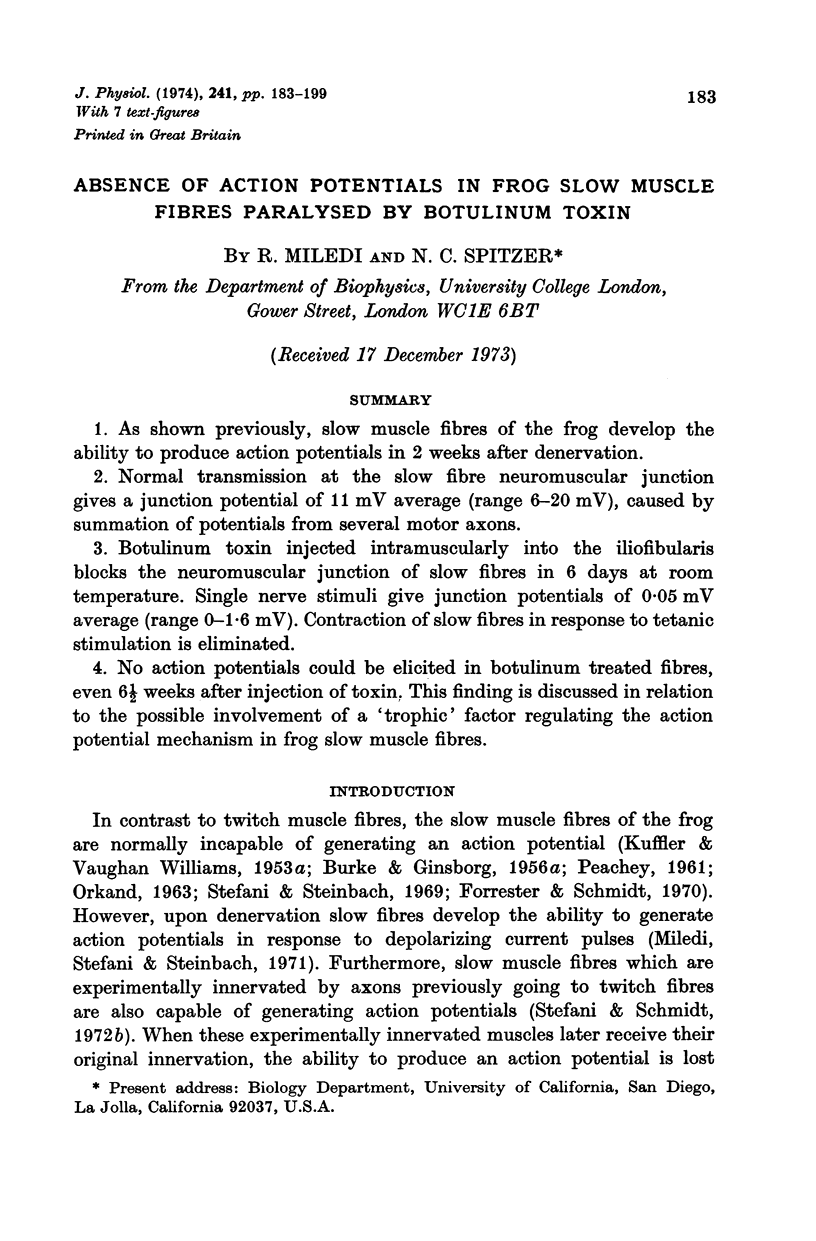
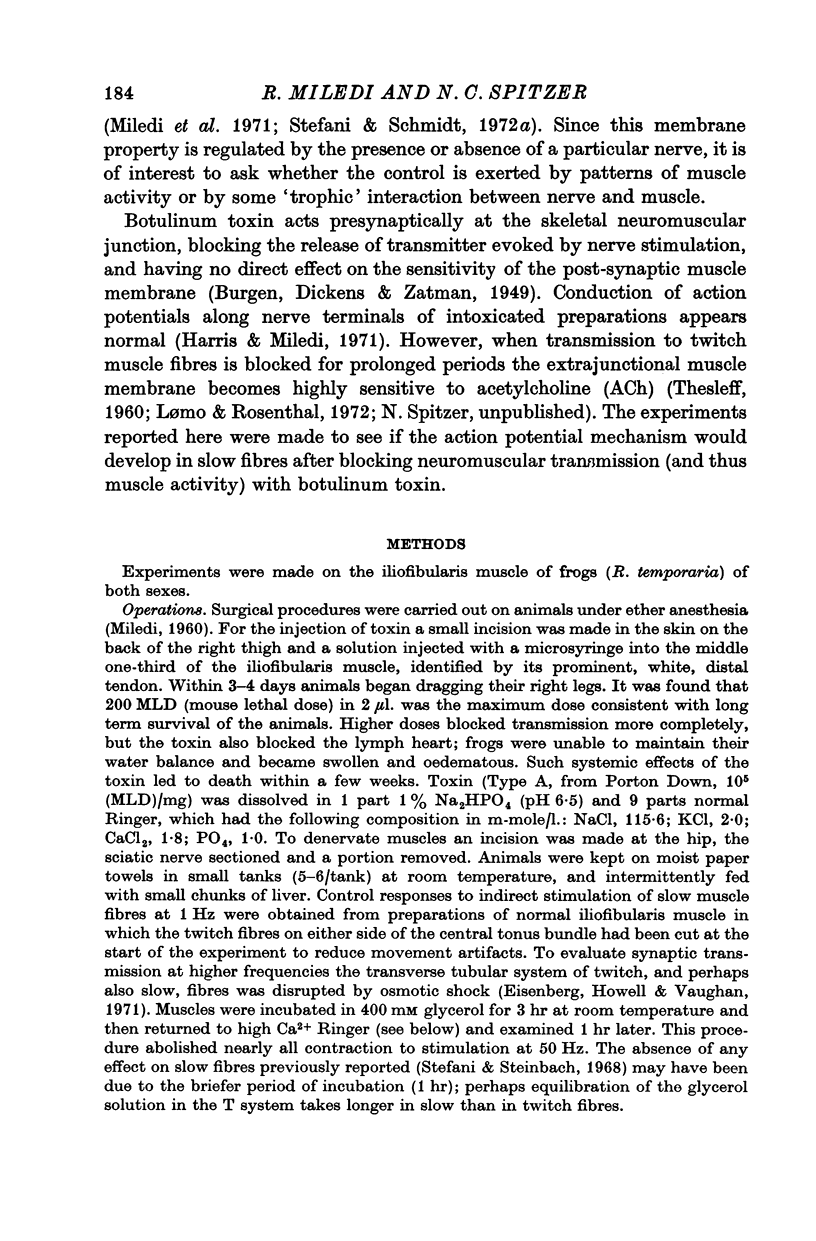
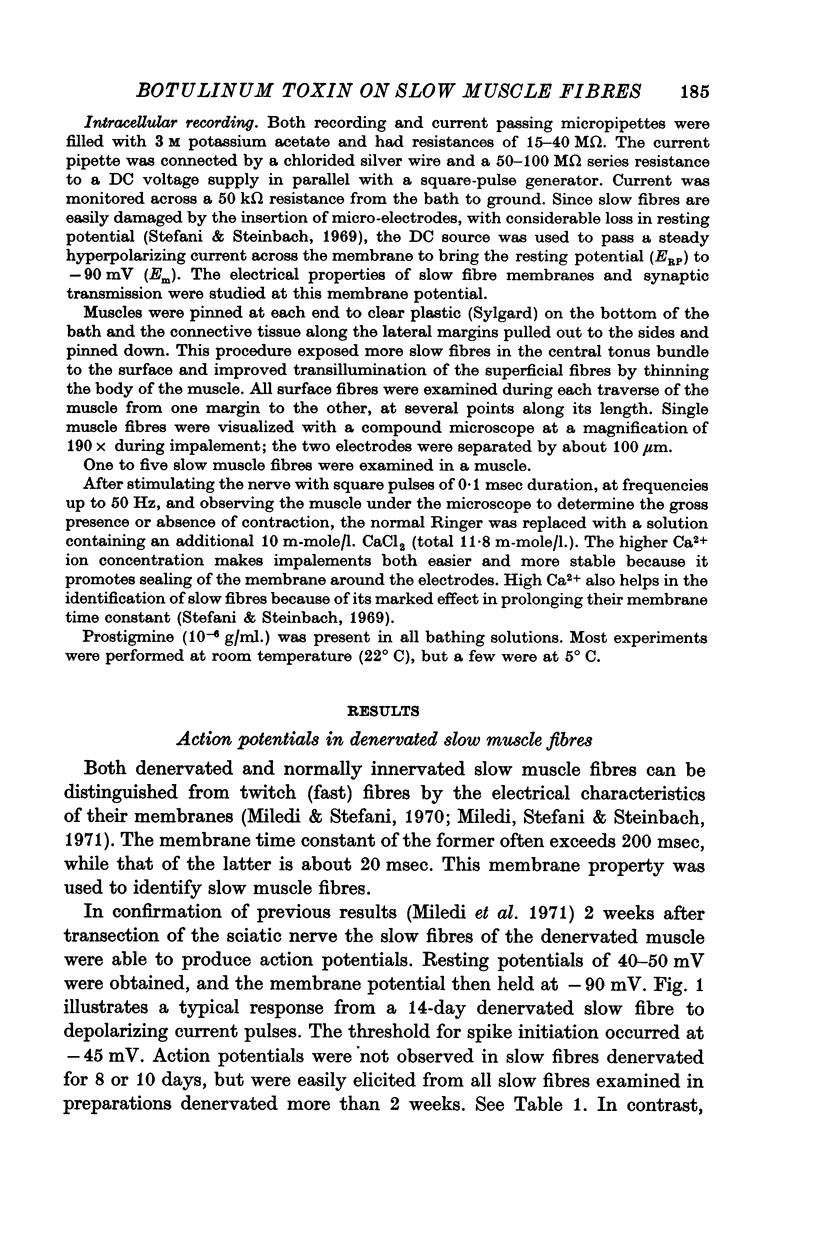
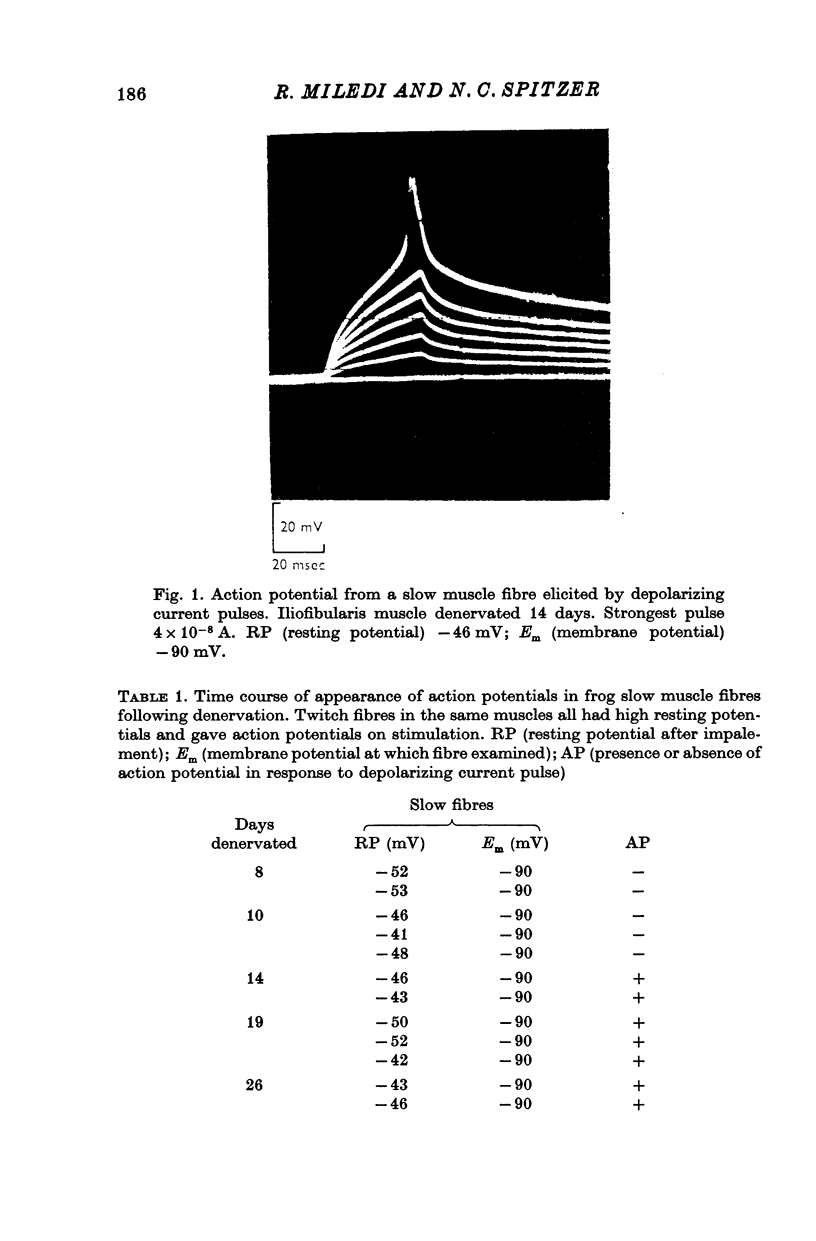
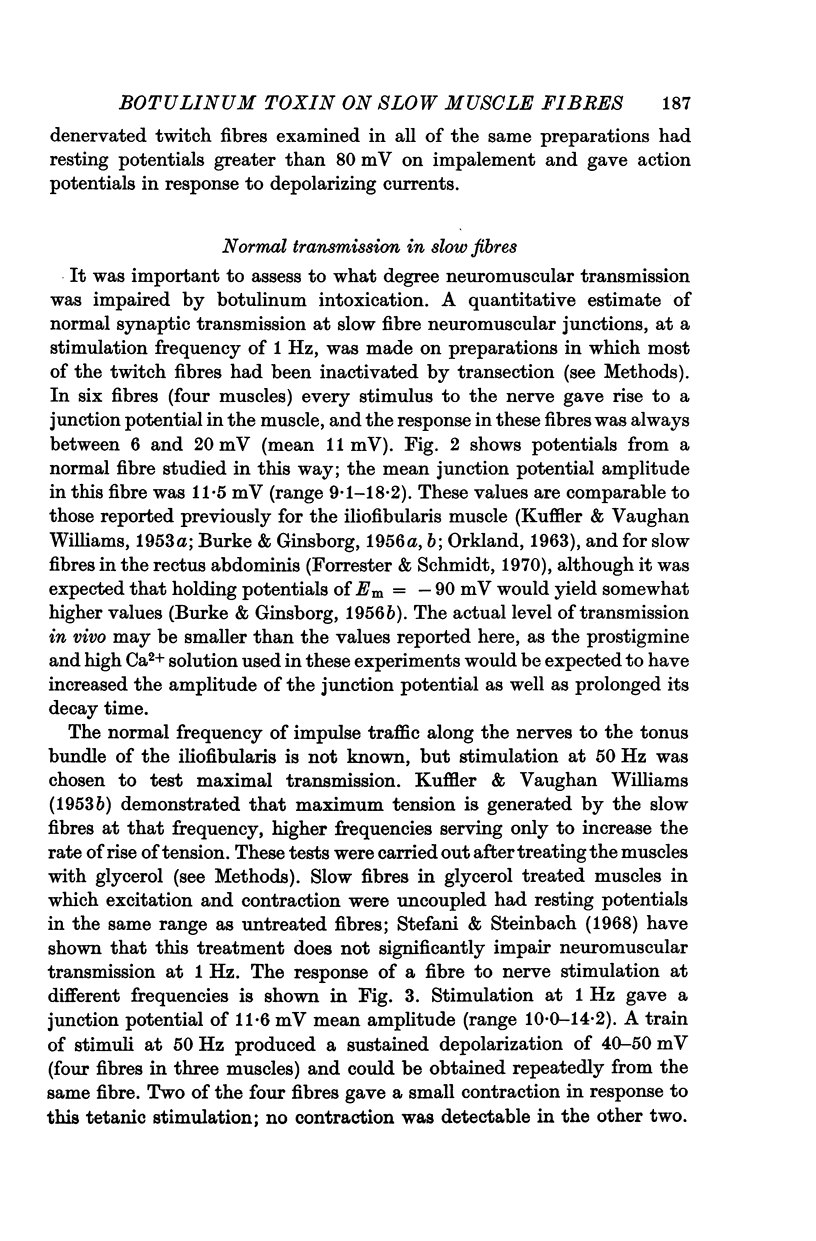
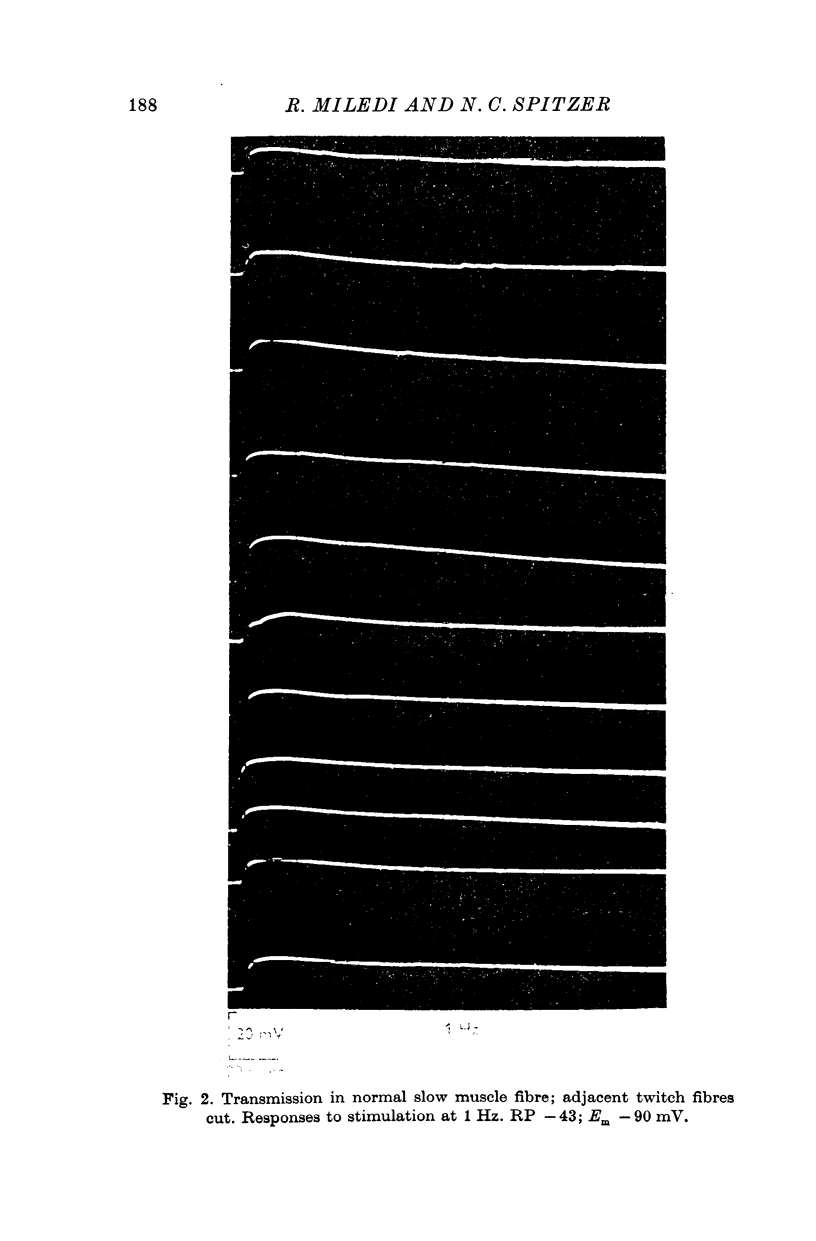
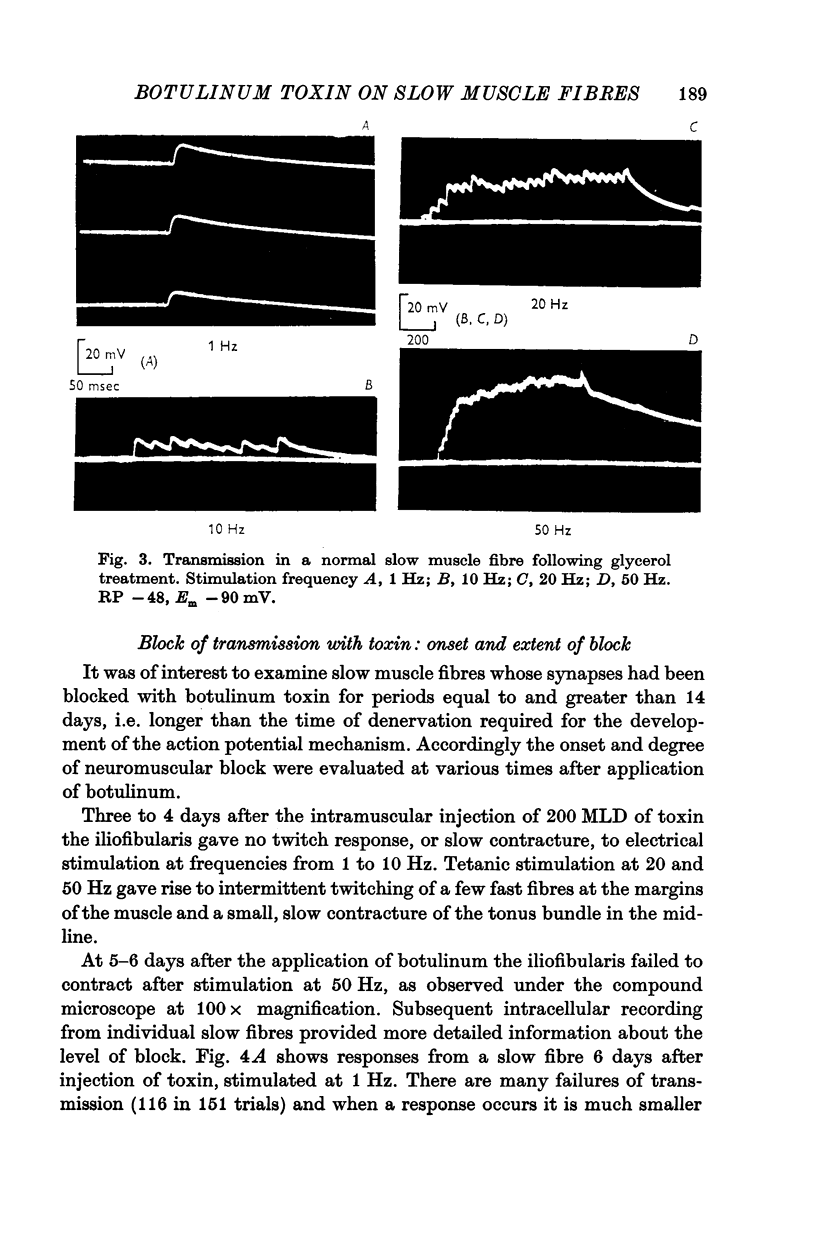
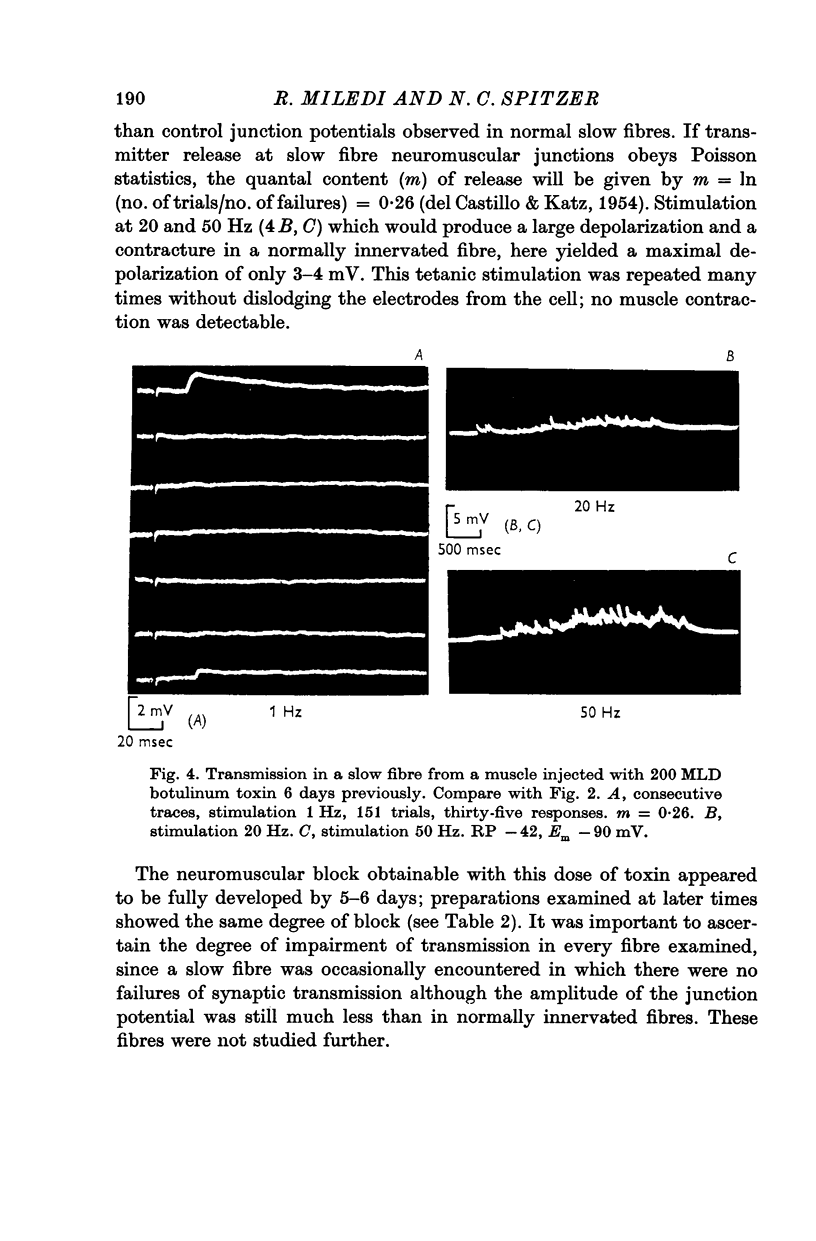
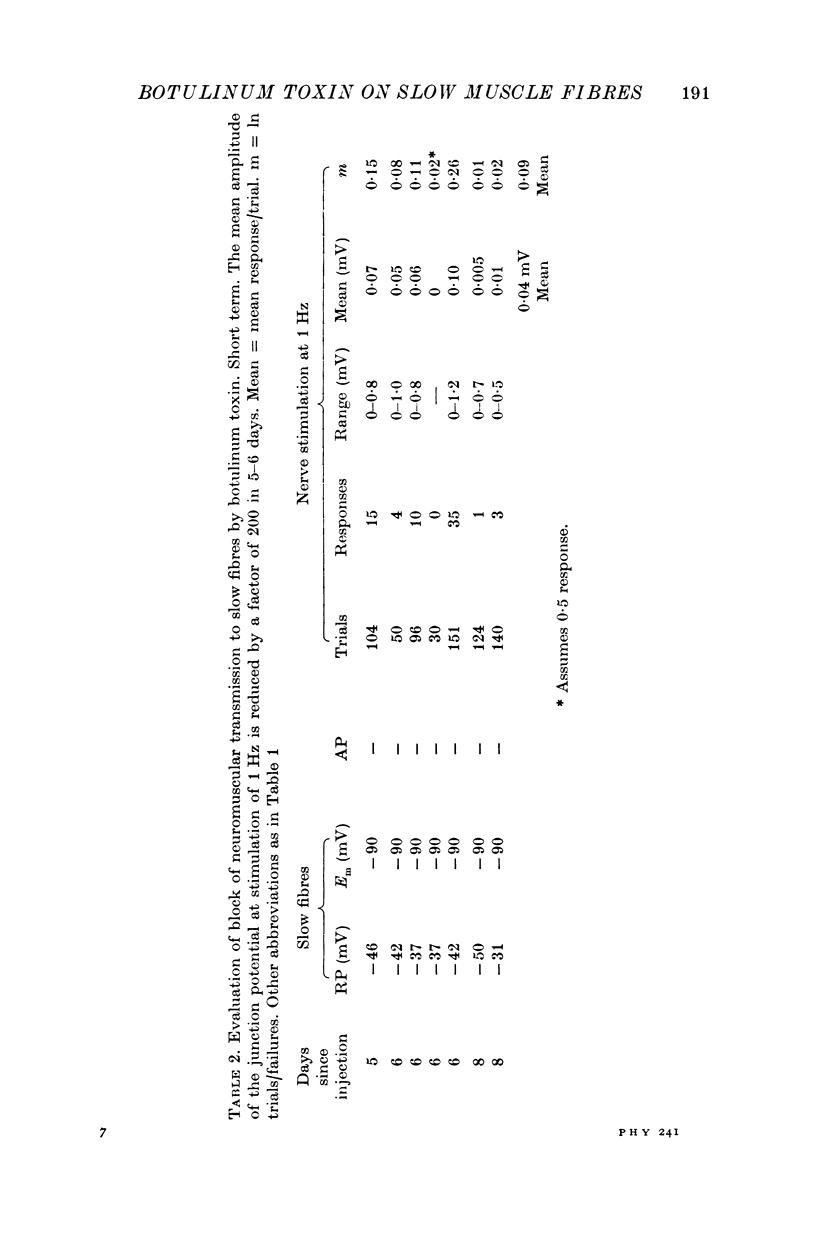
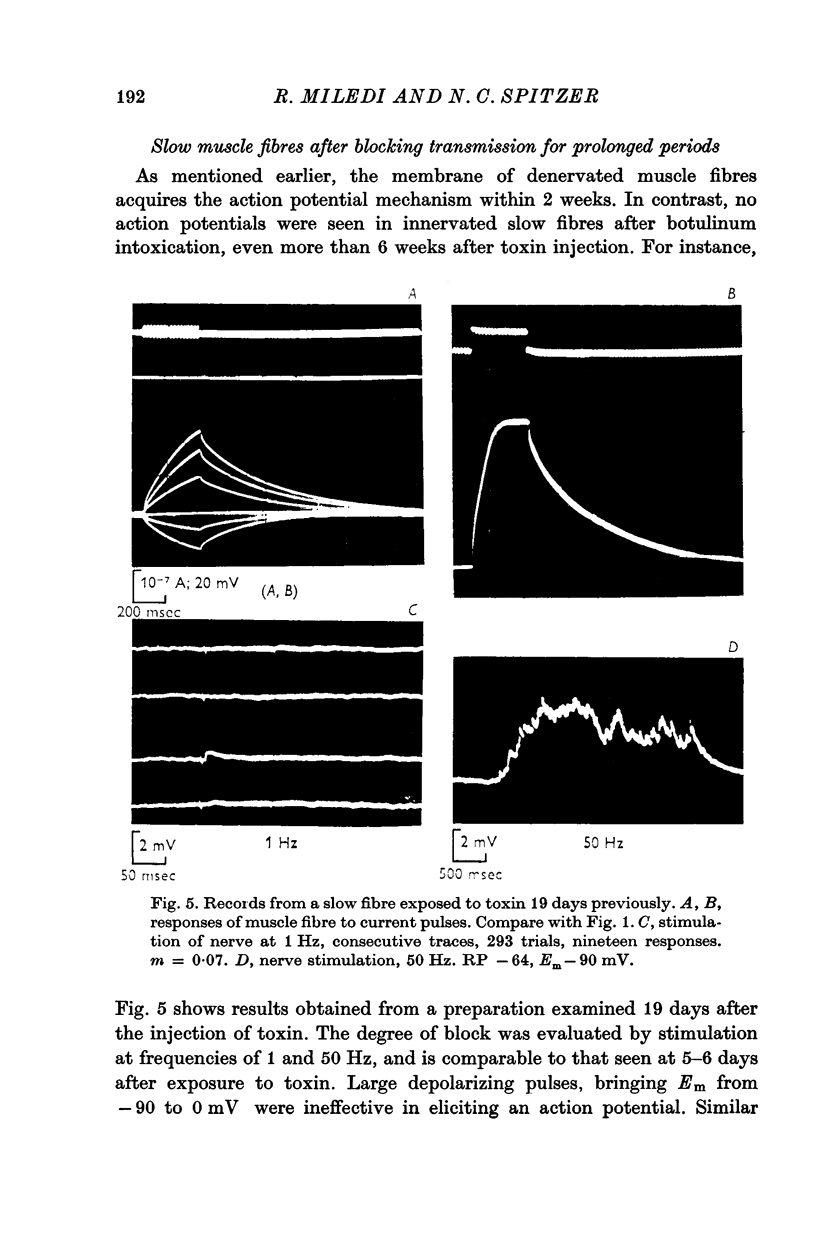
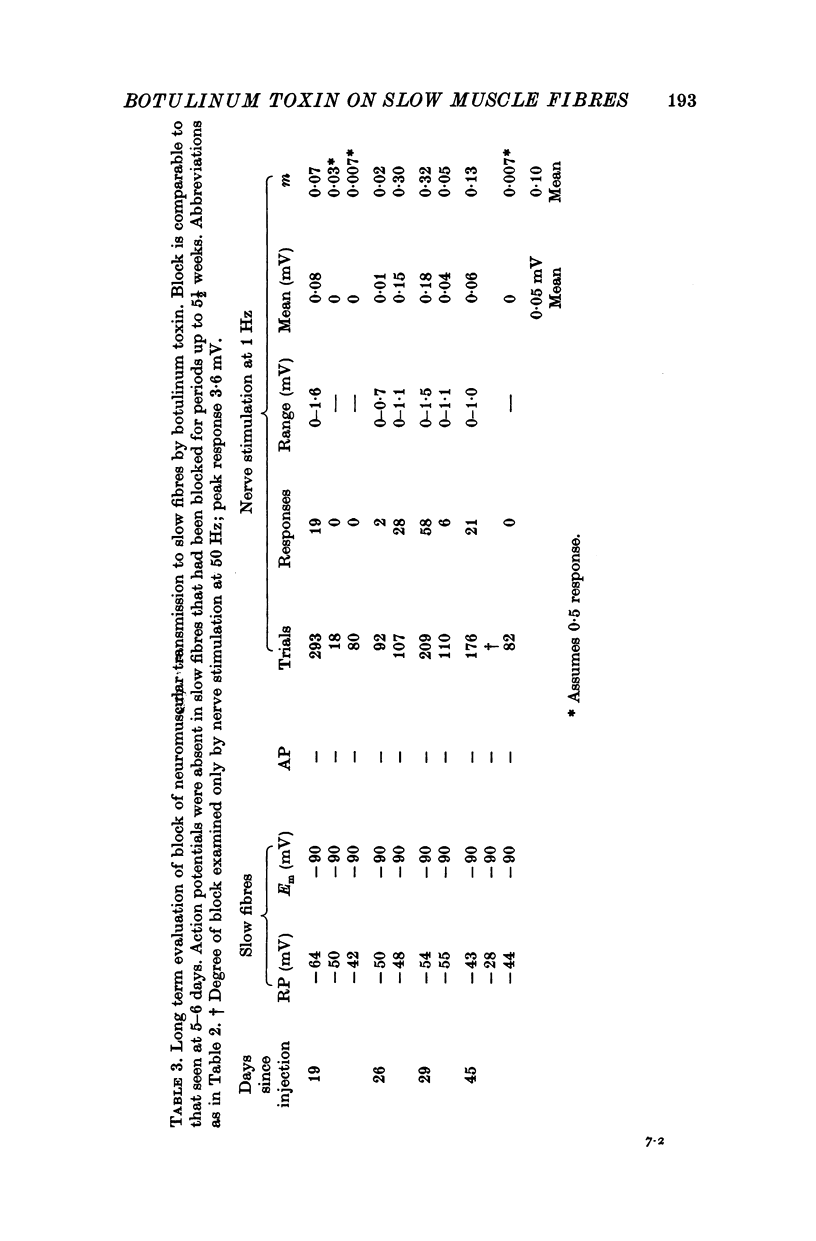
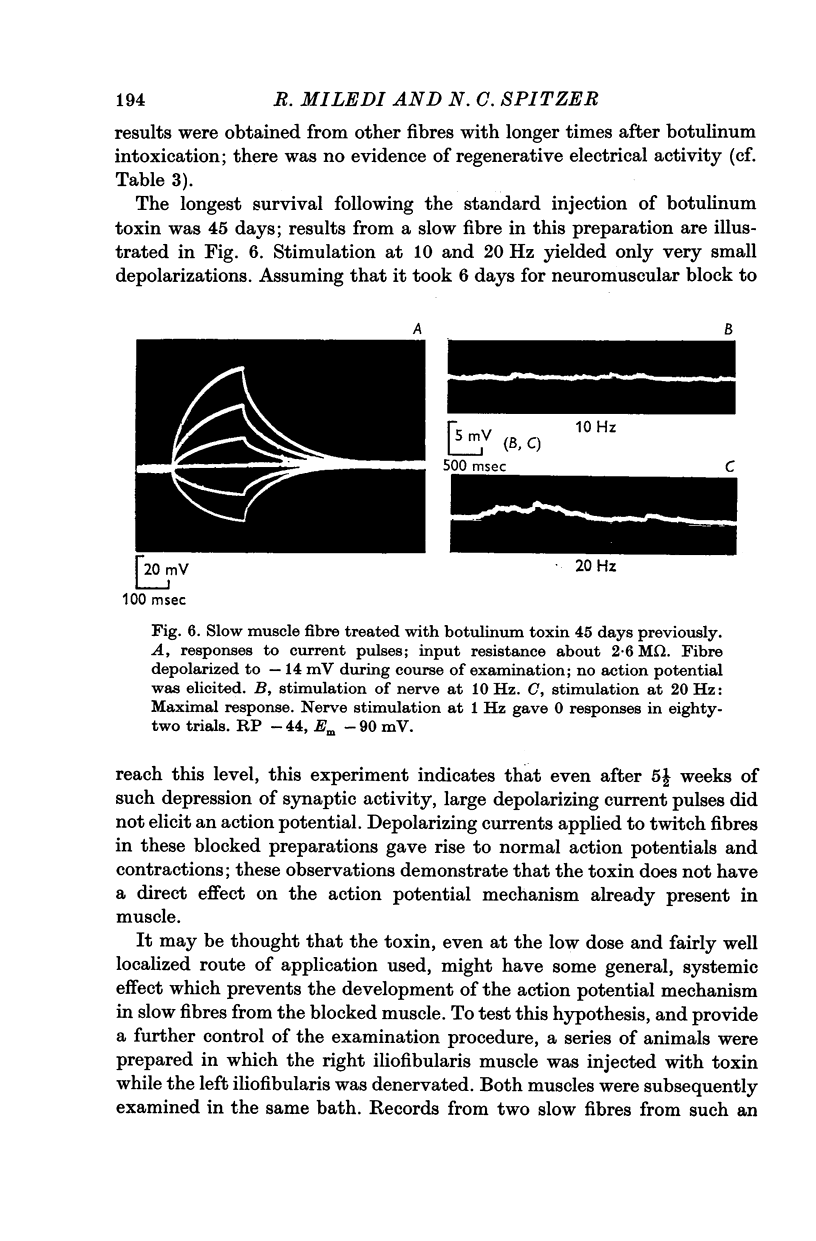
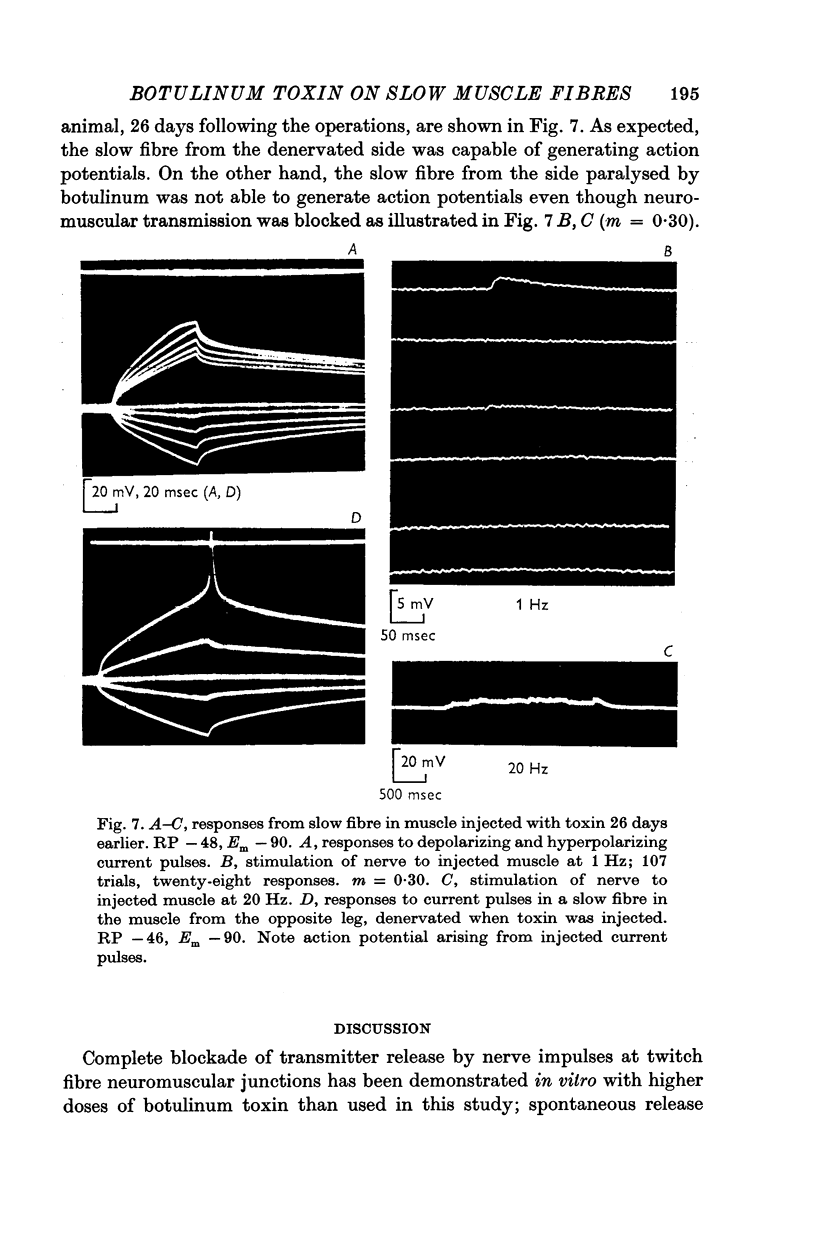
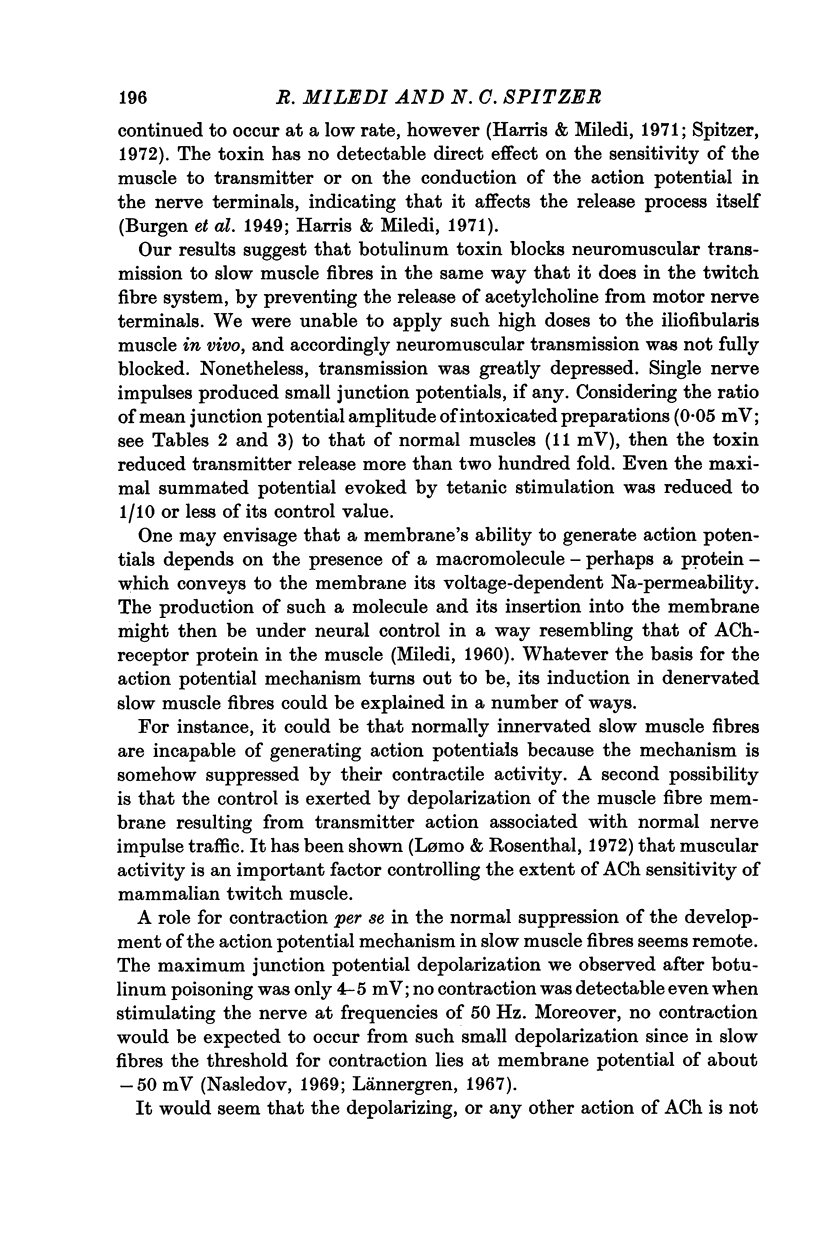
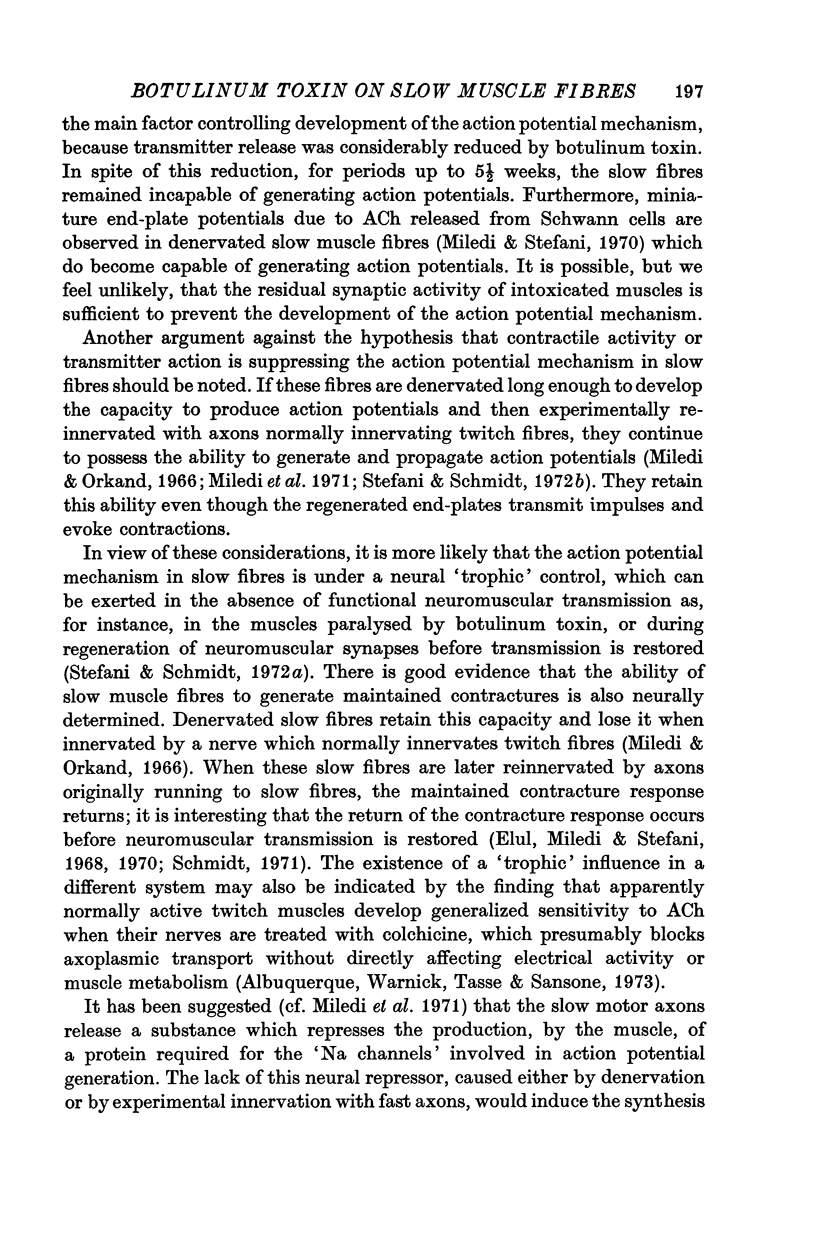
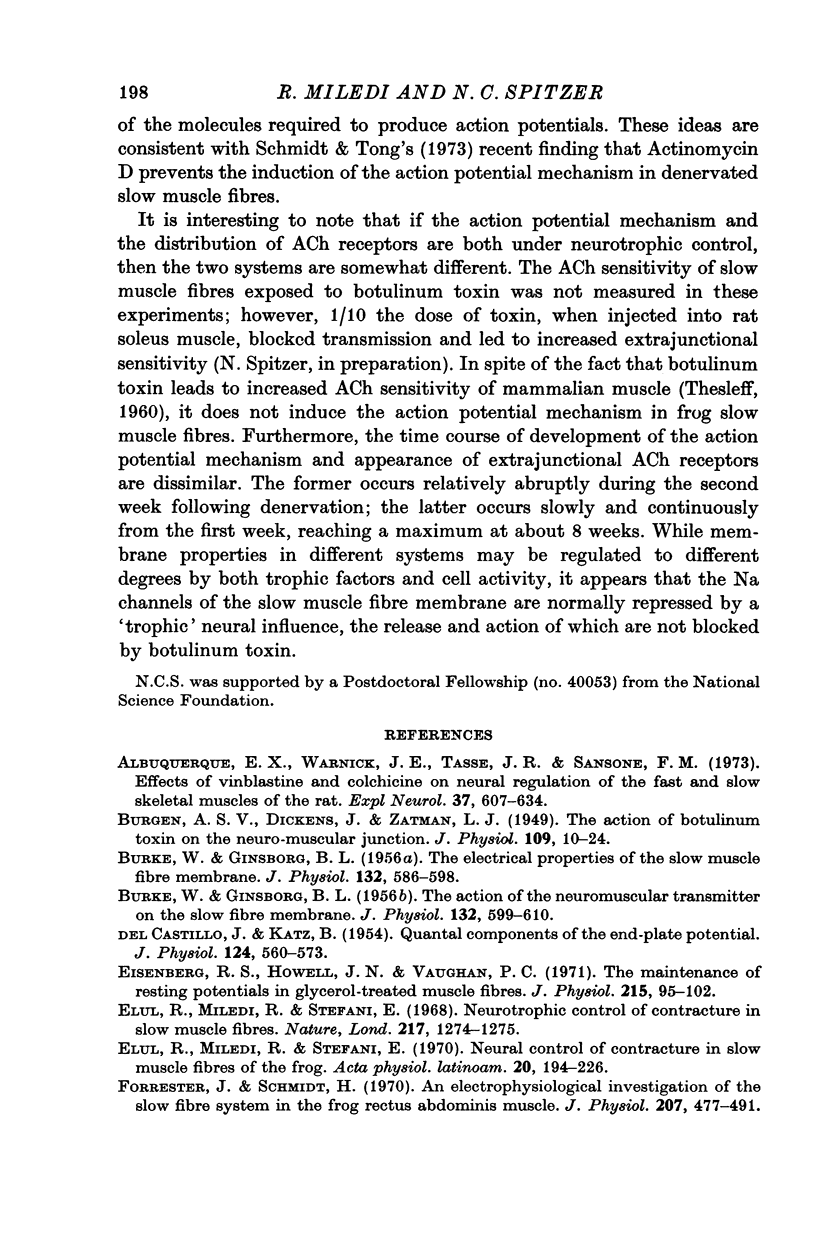
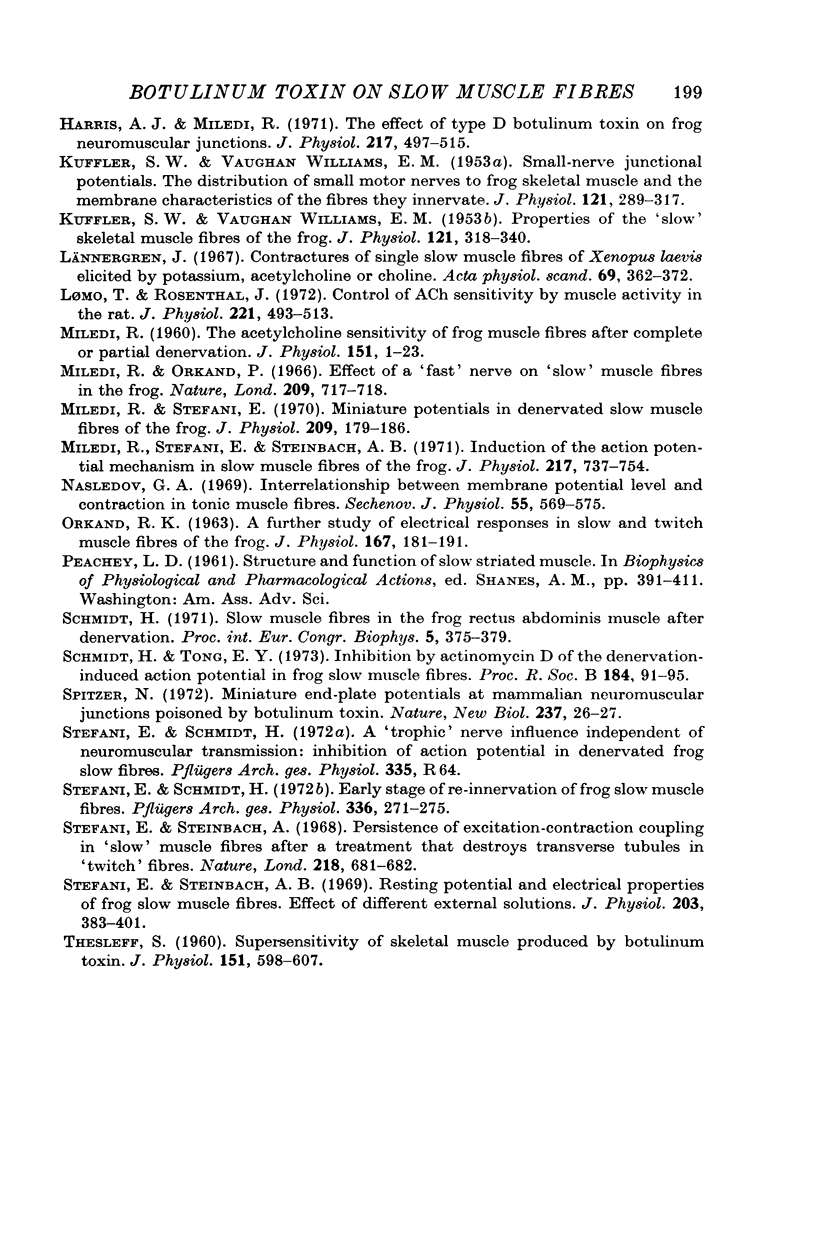
Selected References
These references are in PubMed. This may not be the complete list of references from this article.
- Albuquerque E. X., Warnick J. E., Tasse J. R., Sansone F. M. Effects of vinblastine and colchicine on neural regulation of the fast and slow skeletal muscles of the rat. Exp Neurol. 1972 Dec;37(3):607–634. doi: 10.1016/0014-4886(72)90103-3. [DOI] [PubMed] [Google Scholar]
- BURGEN A. S. V., DICKENS F., ZATMAN L. J. The action of botulinum toxin on the neuro-muscular junction. J Physiol. 1949 Aug;109(1-2):10–24. doi: 10.1113/jphysiol.1949.sp004364. [DOI] [PMC free article] [PubMed] [Google Scholar]
- BURKE W., GINSBORG B. L. The electrical properties of the slow muscle fibre membrane. J Physiol. 1956 Jun 28;132(3):586–598. doi: 10.1113/jphysiol.1956.sp005551. [DOI] [PMC free article] [PubMed] [Google Scholar]
- DEL CASTILLO J., KATZ B. Quantal components of the end-plate potential. J Physiol. 1954 Jun 28;124(3):560–573. doi: 10.1113/jphysiol.1954.sp005129. [DOI] [PMC free article] [PubMed] [Google Scholar]
- Eisenberg R. S., Howell J. N., Vaughan P. C. The maintenance of resting potentials in glycerol-treated muscle fibres. J Physiol. 1971 May;215(1):95–102. doi: 10.1113/jphysiol.1971.sp009459. [DOI] [PMC free article] [PubMed] [Google Scholar]
- Elul R., Miledi R., Stefani E. Neural control of contracture in slow muscle fibres of the frog. Acta Physiol Lat Am. 1970;20(3):194–226. [PubMed] [Google Scholar]
- Elul R., Miledi R., Stefani E. Neurotrophic control of contracture in slow muscle fibres. Nature. 1968 Mar 30;217(5135):1274–1275. doi: 10.1038/2171274a0. [DOI] [PubMed] [Google Scholar]
- Forrester T., Schmidt H. An electrophysiological investigation of the slow fibre system in the frog rectus abdominis muscle. J Physiol. 1970 Apr;207(2):477–491. doi: 10.1113/jphysiol.1970.sp009074. [DOI] [PMC free article] [PubMed] [Google Scholar]
- Harris A. J., Miledi R. The effect of type D botulinum toxin on frog neuromuscular junctions. J Physiol. 1971 Sep;217(2):497–515. doi: 10.1113/jphysiol.1971.sp009582. [DOI] [PMC free article] [PubMed] [Google Scholar]
- KUFFLER S. W., VAUGHAN WILLIAMS E. M. Properties of the 'slow' skeletal muscles fibres of the frog. J Physiol. 1953 Aug;121(2):318–340. doi: 10.1113/jphysiol.1953.sp004949. [DOI] [PMC free article] [PubMed] [Google Scholar]
- KUFFLER S. W., VAUGHAN WILLIAMS E. M. Small-nerve junctional potentials; the distribution of small motor nerves to frog skeletal muscle, and the membrane characteristics of the fibres they innervate. J Physiol. 1953 Aug;121(2):289–317. doi: 10.1113/jphysiol.1953.sp004948. [DOI] [PMC free article] [PubMed] [Google Scholar]
- Lomo T., Rosenthal J. Control of ACh sensitivity by muscle activity in the rat. J Physiol. 1972 Mar;221(2):493–513. doi: 10.1113/jphysiol.1972.sp009764. [DOI] [PMC free article] [PubMed] [Google Scholar]
- MILEDI R. The acetylcholine sensitivity of frog muscle fibres after complete or partial devervation. J Physiol. 1960 Apr;151:1–23. [PMC free article] [PubMed] [Google Scholar]
- Miledi R., Orkand P. Effect of a "fast" nerve on "slow" muscle fibres in the frog. Nature. 1966 Feb 12;209(5024):717–718. doi: 10.1038/209717a0. [DOI] [PubMed] [Google Scholar]
- Miledi R., Stefani E. Miniature potentials in denervated slow muscle fibres of the frog. J Physiol. 1970 Jul;209(1):179–186. doi: 10.1113/jphysiol.1970.sp009161. [DOI] [PMC free article] [PubMed] [Google Scholar]
- Miledi R., Stefani E., Steinbach A. B. Induction of the action potential mechanism in slow muscle fibres of the frog. J Physiol. 1971 Sep;217(3):737–754. doi: 10.1113/jphysiol.1971.sp009597. [DOI] [PMC free article] [PubMed] [Google Scholar]
- ORKAND R. K. A further study of electrical responses in slow and twitch muscle fibres of the frog. J Physiol. 1963 Jun;167:181–191. doi: 10.1113/jphysiol.1963.sp007140. [DOI] [PMC free article] [PubMed] [Google Scholar]
- Schmidt H., Tong E. Y. Inhibition by actinomycin D of the denervation-induced action potential in frog slow muscle fibres. Proc R Soc Lond B Biol Sci. 1973 Aug 31;184(1074):91–95. doi: 10.1098/rspb.1973.0033. [DOI] [PubMed] [Google Scholar]
- Spitzer N. Miniature end-plate potentials at mammalian neuromuscular junctions poisoned by botulinum toxin. Nat New Biol. 1972 May 3;237(70):26–27. doi: 10.1038/newbio237026a0. [DOI] [PubMed] [Google Scholar]
- Stefani E., Steinbach A. B. Resting potential and electrical properties of frog slow muscle fibres. Effect of different external solutions. J Physiol. 1969 Aug;203(2):383–401. doi: 10.1113/jphysiol.1969.sp008869. [DOI] [PMC free article] [PubMed] [Google Scholar]
- Stefani E., Steinbach A. Persistence of excitation contraction coupling in "slow" muscle fibres after a treatment that destroys transverse tubules in "twitch" fibres. Nature. 1968 May 18;218(5142):681–682. doi: 10.1038/218681a0. [DOI] [PubMed] [Google Scholar]
- THESLEFF S. Supersensitivity of skeletal muscle produced by botulinum toxin. J Physiol. 1960 Jun;151:598–607. doi: 10.1113/jphysiol.1960.sp006463. [DOI] [PMC free article] [PubMed] [Google Scholar]


